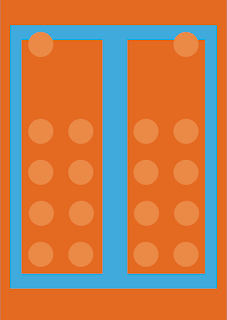OUGD406
Studio Brief 2
Process
Before I began the practical side of this project I created a digital scale mock-up to use as a guide
I began the process by measuring a block of wood to A3 and sanded the wood. However, the laser cutting aspect proved to be much more challenging than I expected so it took me 4 attempts to get the outcome I needed.
Template:
I then created the inverted text in the background. The background is a combination of a description of the film and a list of items in the shots.
I printed this and scanned it in, moving it slightly when scanning, to suggest movement. The result is lo-fi which suits the feel of the film. I then inverted the colours to create a positive for screen printing. The wood will show through the letters as they will be blacked out. The typeface chosen is Open Sans Condensed Bold. The type needs to be bold to make it legible even when distorted. A sans serif type was chosen as a serif font would be too decorative and could have interfered with the distortion. The design is busy so it was important for me to keep the constituent parts as simple and clean as possible, I think this font does this. The type is bold and condensed to leave as little empty space as possible and make the writing easier to read once the colours had been inverted.
Experiments with screen printing and laser cutting:
The negative space in the screen print is blue to represent Leeds Bridge which is painted blue. The blue is dark so it will complement the gold foiling that will be added to represent the metal hardware on the original 16 lens camera.
Gold Foil practice:
I learnt to use this technique by trial and error and found the most successful outcome came from leaving the foil till it was completely cool before pealing excess away.
Final Outcome:
Overall I think the design is messy and the execution could be much improve. Saying this, I think the justification behind the design is solid and the messy, unsteady feel of the print reflects the movement in the film.






































